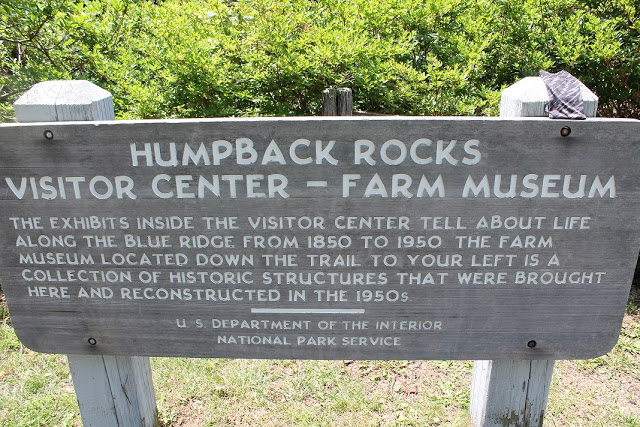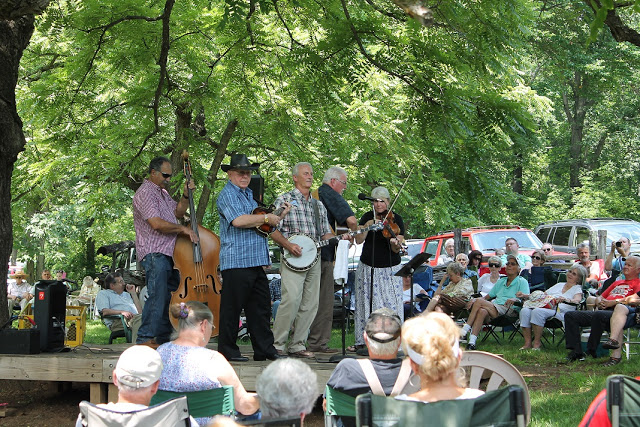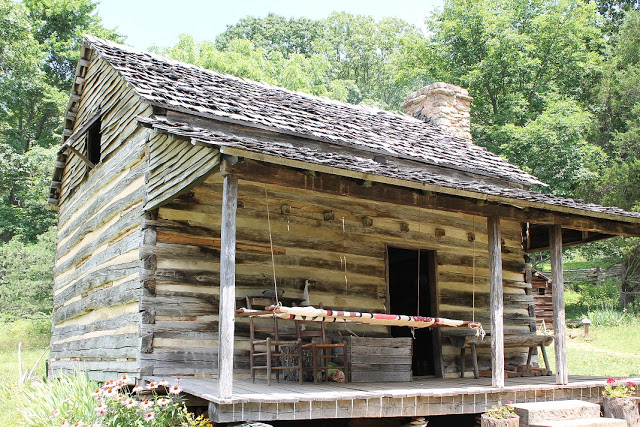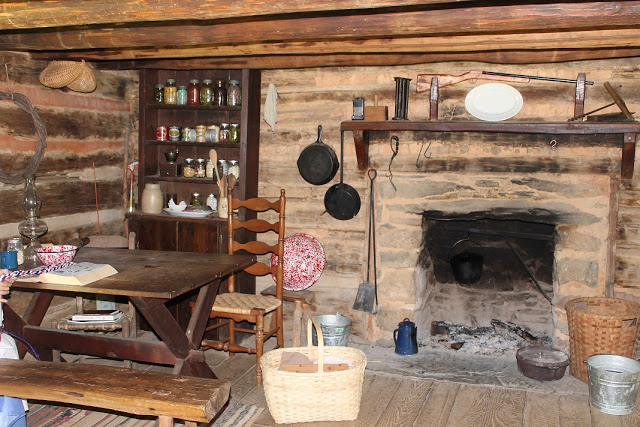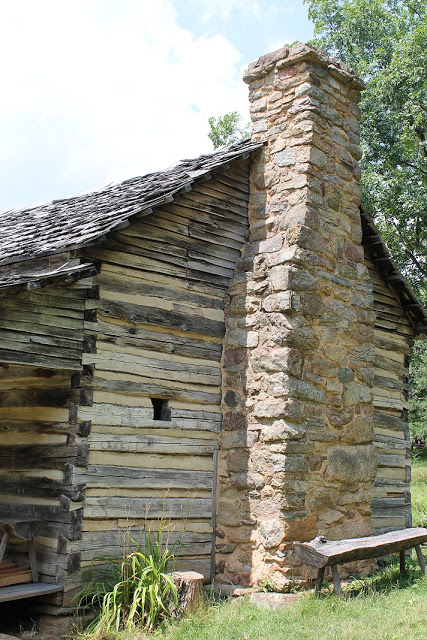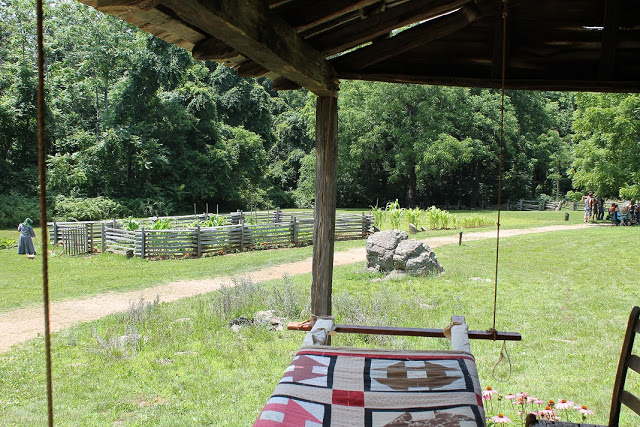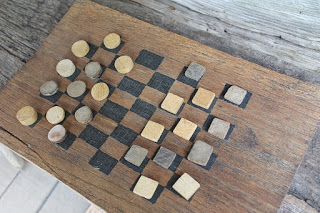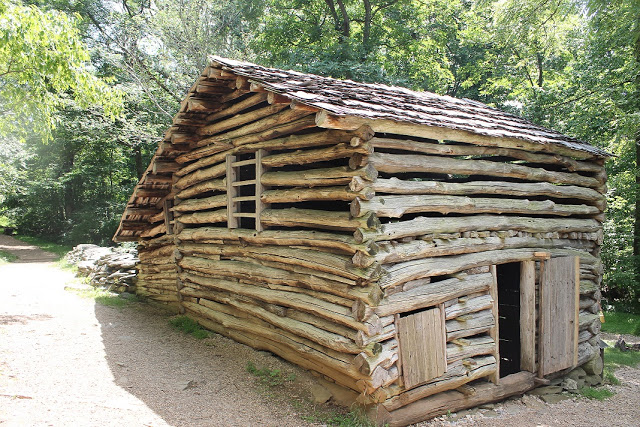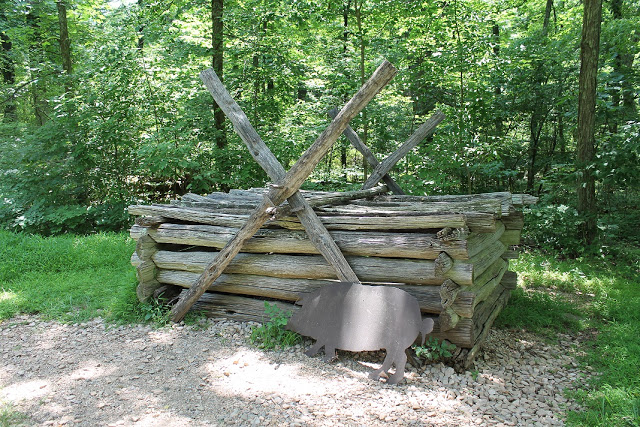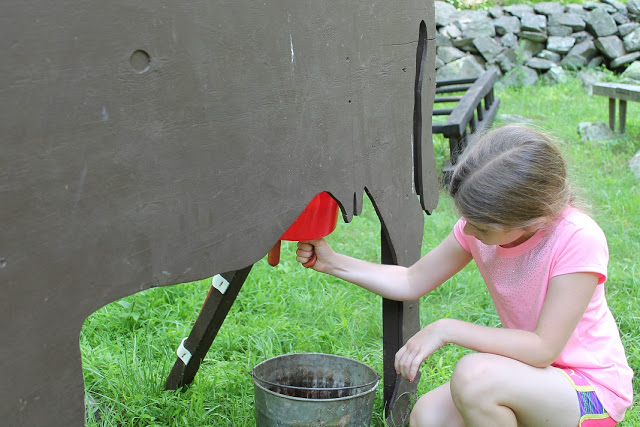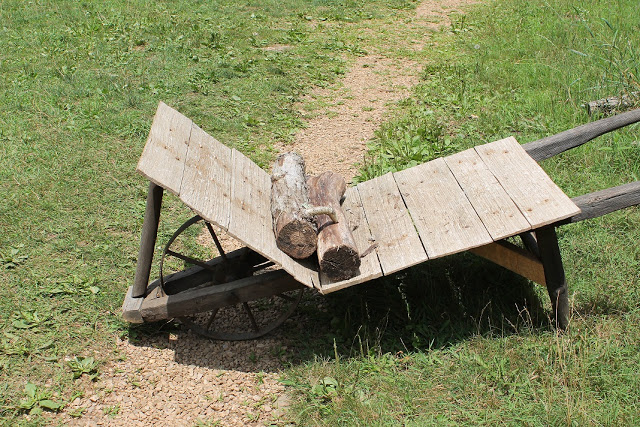Just a short hop on the Blue Ridge Parkway is the Humpback
Rocks Visitor Center, Farm Museum and the trail head to a one mile long hike to
the top of Humpback Rocks. The Parkway
was built during the Great Depression as a works project to employ young men
from urban areas. Pay was sent home to
help the families and they learned skills such as road building, stone work and
construction. Their work still stands in
the bridges, overlooks and building along the Parkway.
Rocks Visitor Center, Farm Museum and the trail head to a one mile long hike to
the top of Humpback Rocks. The Parkway
was built during the Great Depression as a works project to employ young men
from urban areas. Pay was sent home to
help the families and they learned skills such as road building, stone work and
construction. Their work still stands in
the bridges, overlooks and building along the Parkway.
The Visitor Center has music on some weekends during the
summer. It is a chance for tourist to
hear the local Blue Grass Music that has strong roots in the Blue Ridge
Mountains. A number of locals come out
as well to reminisce about the times gone by when they had grand parents who
lived on a small farm like the one represented at the Farm Museum.
summer. It is a chance for tourist to
hear the local Blue Grass Music that has strong roots in the Blue Ridge
Mountains. A number of locals come out
as well to reminisce about the times gone by when they had grand parents who
lived on a small farm like the one represented at the Farm Museum.
Playing under the shade of an old Walnut tree, local
musician play the Banjo, fiddle, mandolin and standup bass. The local area has a number of people who
still make the tradition instruments and sell them all over the world.
musician play the Banjo, fiddle, mandolin and standup bass. The local area has a number of people who
still make the tradition instruments and sell them all over the world.
The log cabin home is typical of the log homes built in the
area. Chestnut and oak logs were squared
up to make the walls. Often in later
years, the same houses might get white painted clapboard siding. Farming on the mountain tops was not easy, as
there is very little soil and lots of rocks.
The farms would till a small area and have livestock on the rest. Much of their income came from the woods,
either from timber cutting and harvesting chestnuts from the American Chestnut
tree. Wiped out by a blithe in the
1930s, the chestnut tree was dominant tree in the area. It was a light wood that easy to cut and
mill, but had the rot resistance of an oak or cedar tree. It also produced a flood of chestnuts in the
fall that were a key staple to survive the long winters in the mountains. They were also shipped into places like New
York City, where “chestnuts roasting on an open fire” were a traditional
holiday treat. While efforts are still
being made to save the species, modern chestnuts are from the Chinese Chestnut
and have a different flavor from the traditional American Chestnut.
area. Chestnut and oak logs were squared
up to make the walls. Often in later
years, the same houses might get white painted clapboard siding. Farming on the mountain tops was not easy, as
there is very little soil and lots of rocks.
The farms would till a small area and have livestock on the rest. Much of their income came from the woods,
either from timber cutting and harvesting chestnuts from the American Chestnut
tree. Wiped out by a blithe in the
1930s, the chestnut tree was dominant tree in the area. It was a light wood that easy to cut and
mill, but had the rot resistance of an oak or cedar tree. It also produced a flood of chestnuts in the
fall that were a key staple to survive the long winters in the mountains. They were also shipped into places like New
York City, where “chestnuts roasting on an open fire” were a traditional
holiday treat. While efforts are still
being made to save the species, modern chestnuts are from the Chinese Chestnut
and have a different flavor from the traditional American Chestnut.
Life in the main room was kitchen, dining room and sleeping
area. The hearth was the focus for
cooking as well as heat. Chores such as
getting water from the well, keeping the fire burning and raising your own food
were just the normal daily routine for people back then. A trip into town was a big occasion for
people who lived out here. Even so, at
the same time period, one could mail order everything from dresses to houses
from a Sears Catalog and Steel structures like the Eiffel Tower were being
built.
area. The hearth was the focus for
cooking as well as heat. Chores such as
getting water from the well, keeping the fire burning and raising your own food
were just the normal daily routine for people back then. A trip into town was a big occasion for
people who lived out here. Even so, at
the same time period, one could mail order everything from dresses to houses
from a Sears Catalog and Steel structures like the Eiffel Tower were being
built.
The stone chimney is often
the only remnants of the cabin left in the woods to remind us that we are
walking on a long forgotten farm. At the
Fenton Inn we have a Chimney and the stone outline on a similar cabin and farm
that nature has reclaimed as its own again.
the only remnants of the cabin left in the woods to remind us that we are
walking on a long forgotten farm. At the
Fenton Inn we have a Chimney and the stone outline on a similar cabin and farm
that nature has reclaimed as its own again.
The front porch of the cabin was a room for rainy summer
days. Quilting was a way to make art out
of scraps of cloth sewn into patterns.
days. Quilting was a way to make art out
of scraps of cloth sewn into patterns.
A game of checkers on the porch.
The barn was used to store hay and protect the family cow in
winter.
winter.
Pigs roamed the woods all summer and were held in small pens
to fatten them up on chestnuts in the fall.
to fatten them up on chestnuts in the fall.
In an age when everything comes from a plastic container,
seeing where milk comes from is a shock to many children.
seeing where milk comes from is a shock to many children.
Firewood was a daily task year round for heat and
cooking. The trees were cut to make
fields. The wood was used for lumber and
firewood and even the ashes were used to make soap. It may
have been a lot of work, but then how hard do we work today to get things we
don’t even need?
cooking. The trees were cut to make
fields. The wood was used for lumber and
firewood and even the ashes were used to make soap. It may
have been a lot of work, but then how hard do we work today to get things we
don’t even need?


